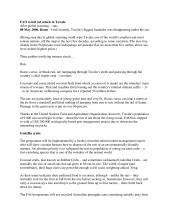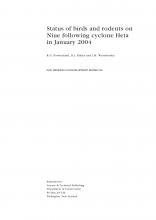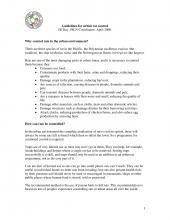Conservation of Kakerori (Pomarea dimidiata) in 2002/2003


Island and Ocean Ecosystems, BRB
Available Online
Robertson, Hugh A.
,
Saul, Edward K.
2002
In 1989, the kakerori (Pomarea dimidiata) was one of the 10 rarest bird species in the world with a declining population of just 29 birds. During each breeding season since then, rats have been poisoned within the 155 ha of forested hill country they occupy in southeastern Rarotonga. As a result, the kakerori population has rebounded, with a minimum of 259 birds being found on Rarotonga in August 2002. In 2001 and 2002, 20 yearlings were transferred to Atiu in the first two of three planned annual transfers to establish an insurance population. In January 2003, three pairs of kakerori were found on Atiu, and successful breeding was proven with the discovery of six island-bred (unbanded) birds, belonging to at least two of the pairs. In 2002/03, the emphasis of management in the Takitumu Conservation Area shifted from the recovery of kakerori to a programme aimed at sustaining the population at about 250 individuals. The key to this work was the experimental reduction of rat poisoning effort, so that 30 territories had the standard weekly refills of poison bait stations, 29 received a fortnightly refill, and 20 received no rat control. As expected, breeding success was significantly better in poisoned areas (with an average of 0.95 fledglings per breeding territory) than in unpoisoned areas (with an average of 0.30 fledglings per breeding territory). This reduced rat control programme took 23 person days each week for 15 weeks, and used a total of 43 kg of Talon® (active ingredient brodifacoum), which was about 20% of peak poison use during the recovery phase of the programme. The fortnightly poisoning regime offers promise as an effective, cheaper and less toxin-intensive method than that used previously.




